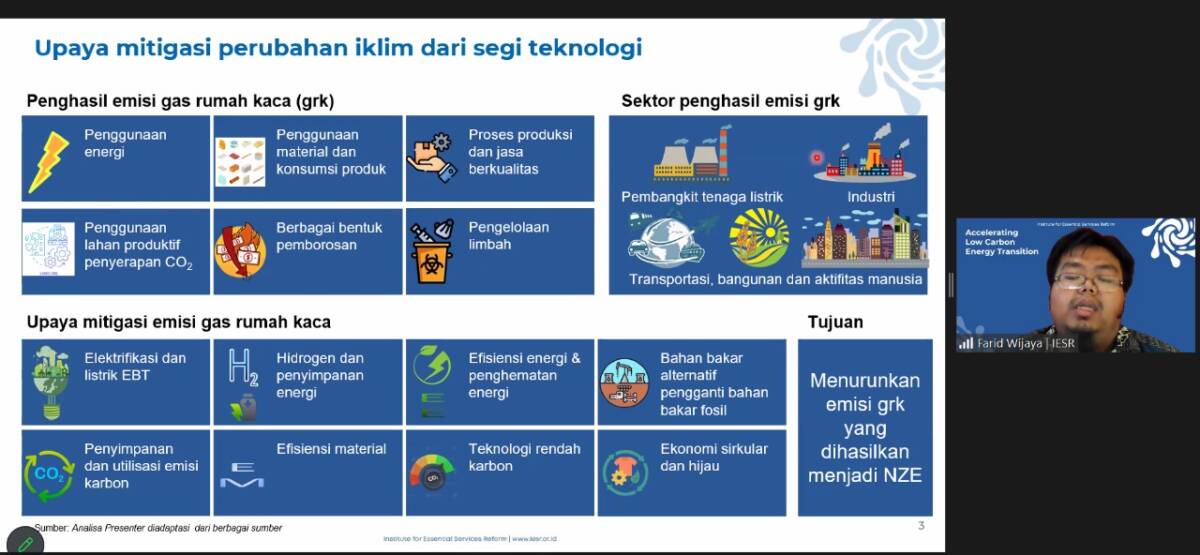Jakarta, May 31, 2024 – In the face of the climate crisis, the world is increasingly advocating for using renewable energy and pushing for reducing fossil fuel development and usage, particularly coal-fired power plants, which are significant contributors to carbon emissions. As a result, stakeholders must be prepared for the possibility of stranded assets in the fossil fuel industry.
When transitioning to renewable energy, it’s essential to anticipate the risk of stranded assets related to fossil energy. Farid Wijaya, Senior Analyst at the Institute for Essential Services Reform (IESR), explains that stranded assets can include buildings, equipment, machinery, transportation and logistics, and industrial activities that rely on fossil fuels.
“In Indonesia, almost 85 percent of stalled assets are estimated to be upstream processes of the fossil fuel exploration industry. Some of the factors that can cause stalled assets include new government regulations that limit the use of fossil fuels, such as carbon pricing, increases and fluctuations in fossil fuels due to geopolitics and supply reserves, as well as changes in demand for shifting to renewable energy due to lower energy costs,” said Farid Wijaya at the Sustainable Energy Development focused discussion forum organized by the Financial and Development Supervisory Agency (BPKP) on Tuesday (28/5/2024).
Farid asserted that stalled assets can be minimized by establishing a renewable energy roadmap. Citing the IRENA study, making an energy transition roadmap with detailed renewable energy use can provide a clear picture of the steps that need to be taken by stakeholders.
“Some risk mitigation also needs to be done in the energy transition. First, mapping and analysis of risks, such as mapping policy frameworks, roadmaps, and national strategies and their impact on assets. Second, analysis and conceptualization of mitigation options, such as understanding the overall asset value. Third, identifying key enablers to overcome the risk of stalled assets,” Farid said.
According to Farid, using natural gas can be a short- to medium-term alternative to utilizing assets that have the potential to experience asset stalling. Citing IRENA data, natural gas is expected to remain in use until 2050 as much as almost 7 percent of the total energy trade commodities. This is driven by the development of carbon capture and storage technology (Carbon Capture Storage and Carbon Capture Utilization and Storage) to capture carbon emissions from either combustion in gas and steam power plants (PLTG) or blue hydrogen production, with carbon capture reaching above 95 percent.
“CCS/CCUS plays a role in utilizing natural gas and other fossil fuels. However, there are potential limitations regarding policies and regulations because they are still based on fossil fuels, and their performance must be strictly controlled. In addition, energy conservation is an important part of decarbonization efforts that needs to be adopted because it is easy to do and has minimal costs,” Farid said.
Farid assessed that energy conservation needs to be implemented at all stages of energy management, which includes upstream management aimed at conserving energy resources and downstream management aimed at improving energy efficiency. The implementation of energy conservation programs is carried out by various sectors, from energy providers, industry, transportation, and buildings, with targets based on the national energy policy (PP No. 79 of 2014), namely a one percent decrease in final energy intensity per year and a 17 percent decrease in final energy consumption from business as usual (BAU).

